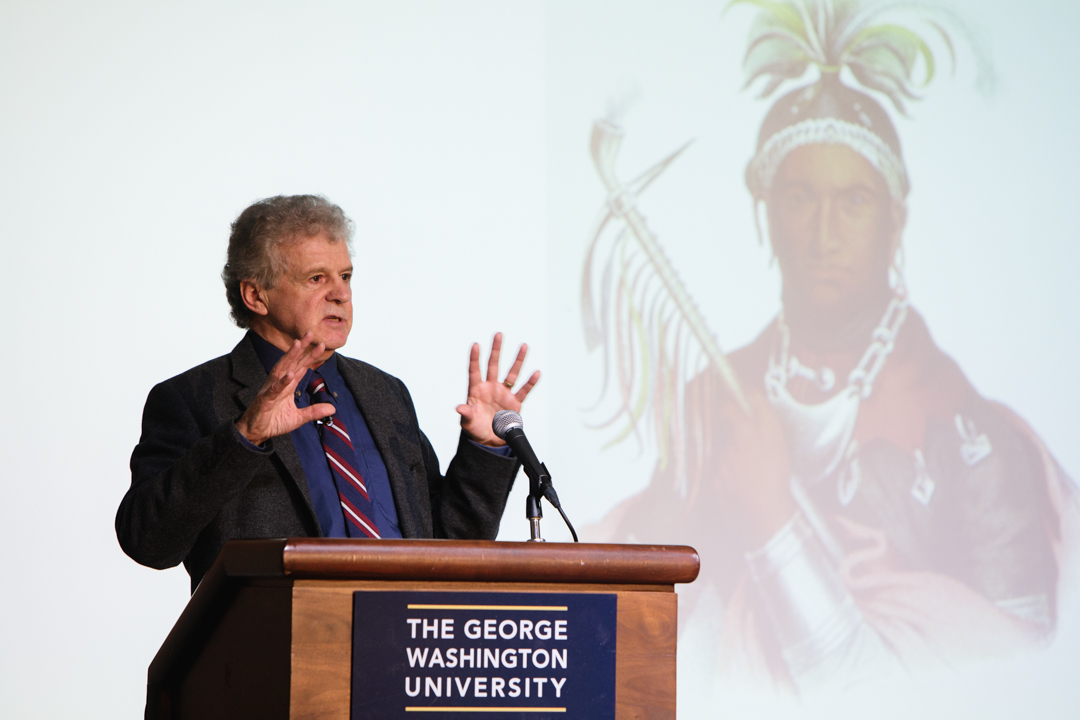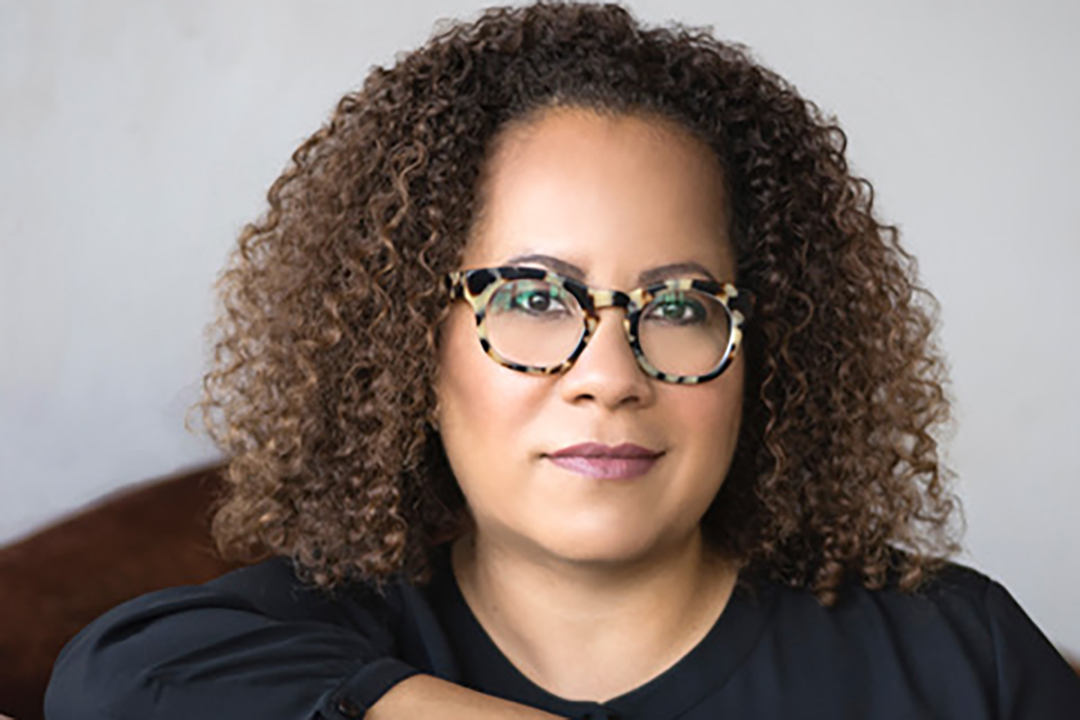By B.L. Wilson
The George Washington University’s seventh annual lecture in celebration of its namesake’s 286th birthday focused on the role Native Americans played in shaping the destiny of George Washington and the United States.
Denver Brunsman, an associate professor of history, characterized the lecture and discussion in the Marvin Center Continental Ballroom as “an intellectual inquiry and sharing of ideas that looks at the positives, negatives and really anything in between.”
George Washington University President Thomas LeBlanc introduced the speaker, Colin Gordon Calloway, the John Kimball 1943 Professor of History and of Native American Studies at Dartmouth University.
“We have the distinct opportunity this evening to probe more deeply into the nuances of George Washington’s life,” Dr. LeBlanc said, “with someone who has studied and researched [the first president] extensively through the lens of his relations with Native Americans.”
Dr. Calloway said he chose this area of study because “George Washington knew that Native Americans were fundamentally important to the history of the early republic, in fact, fundamentally important to its very survival.”
As the leader of the country from its inception, “Washington met just about every prominent American Indian leader of his time, usually in New York or Philadelphia,” Dr. Calloway said. “When he met with them, he smoked the calumet with them, exchanged wampum belts with them and drank punch with them.”
The heart of George Washington’s relationship with Indians was land, an essential component at the start of his life as a surveyor. “A huge part particularly of early American history is the transfer of Native American homelands into American real estate,” Dr. Calloway pointed out.
The colonialists called it Western land, he said, but in reality it was Indian land west of the Ohio River where indigenous people had chosen to make a last stand and where British and French forces fought for land rights.
The fighting led to what many experts view as the war that made America, the French and Indian War, which also launched Washington’s military career and accounts for much of the mythology that surrounds Washington.
“Almost all of the British officers were killed or wounded, not Washington,” he said, “He had horses killed under him. There are even accounts attributed to Indian people who said, ‘We tried to kill him, but we couldn’t. The shots and the arrows missed their mark. Clearly, the Great Spirit was saving this person for future greatness.’”
The British army was decimated by a multi-tribal Indian army that fought on the side of the French, according to Dr. Calloway, but succeeded in getting the Indians to abandon their support of the French.
When British forces failed to honor an agreement with the Indians that allowed them to keep their land, the Indians “wage a rebellion against the biggest empire in the world and almost win,” Dr. Calloway said.
The British prevailed by negotiating an agreement that recognized Indian country and land could only be bought and sold through the crown’s representatives. That did not sit well with the Founding Fathers generation, who invested heavily in land and were being taxed by the British to pay for the army.
“The revolution was a war for America’s independence for sure, but it was also a war for Indian land and who gets it,” Dr. Calloway said.
When the new nation was born, the fight for the West and Indian land did not end. Washington tried to make treaties with the Indian people to get the land by fair and honorable means.
“The problem is what do you do when they say, ‘thanks but no thanks,’” Dr. Calloway said.
Washington’s response was to send in the U.S. Army, which like the British army in 1763 was decimated in a battle that is seldom spoken of. The victory was reversed three years later.
“Washington hoped that the dispossession of Indian land could happen naturally inevitably, slowly and bloodlessly by Indians retreating as American settlers advanced, making their hunting territories less valuable and Indian people willing to sell,” he said.



